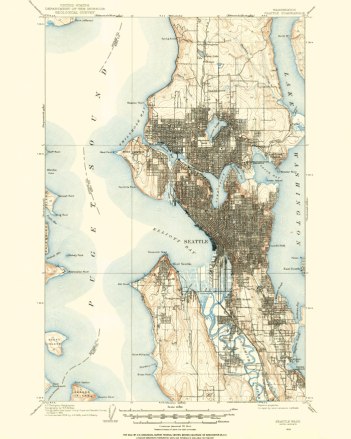Every once in a while, here at Spatialities world headquarters, our research department (me) runs into an old archived map that our marketing department (also me) thinks would look great on someone’s wall.
I found this 1908 USGS quad while researching the former location of the Lake Washington shoreline. It’s from an important time in Seattle’s history. The the Alaska Yukon Pacific Exposition was about to happen, which would shape the University of Washington campus for the next century and beyond. Because the Ship Canal had not been built, Lake Washington was eight feet higher. The Duwamish River still meandered, and South Park and Georgetown were towns in their own right. People were still waiting for the interurban. Rail travel within and between cities was still the best way to get around. Freeways hadn’t been invented.
I did a considerable amount of clean-up to this map–removing old rubber-stamps and imperfections. It’s now ready for your wall.
You can order hard-copy prints of the files I’ve cleaned up here…




